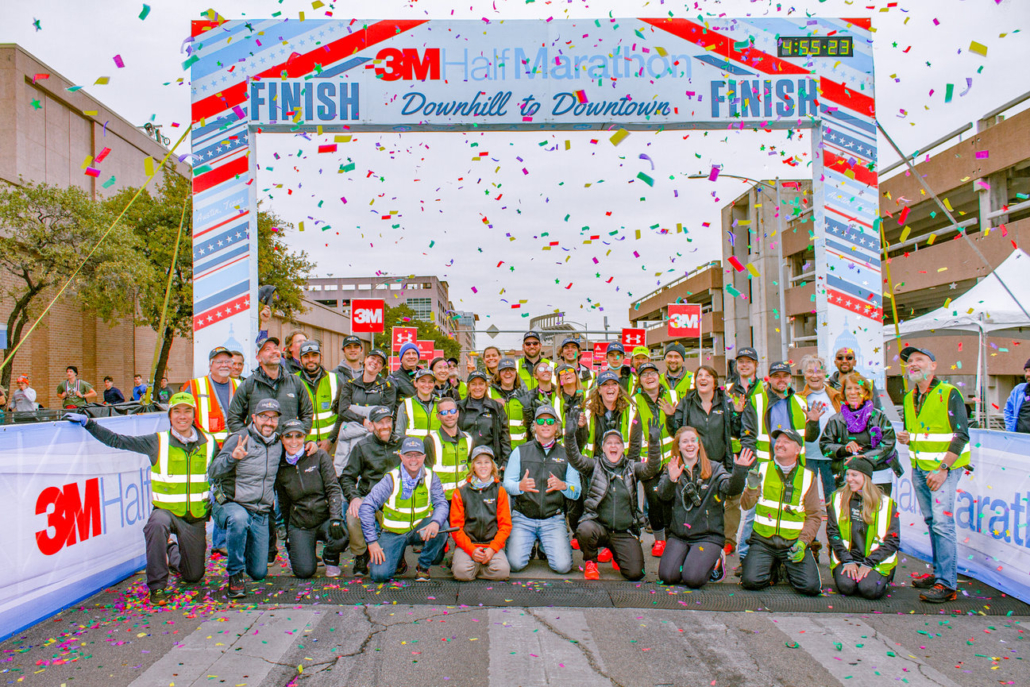With the holidays and the Austin International Half fast approaching, it’s that special time of year when social calendars are packed with festive gatherings, and your running schedule is focused on preparing for race day. Navigating holiday parties while staying on track with your half marathon training can feel like a challenge, especially with all the eggnog, mulled wine, and cocktails in the mix.
So, how does alcohol fit into your training plan? Can you enjoy a drink or two without derailing your progress, or should you steer clear entirely? Let’s explore the pros and cons of alcohol consumption during training, and how you can enjoy the holidays without sacrificing your race goals.
The Pros of Alcohol Consumption (Yes, There Are Some!)
While it’s true that alcohol can have some negative effects on athletic performance, enjoying it in moderation during the holiday season doesn’t mean you have to throw your training out the window. In fact, there are a few potential upsides to moderate alcohol consumption.
- Stress Relief and Social Enjoyment
Training for the Austin International Half can be demanding, especially when the holiday season adds extra pressures. Attending holiday parties and enjoying a drink can help you relax and unwind with family and friends. Sharing a glass of wine or a holiday cocktail allows you to celebrate without feeling overly restricted.
Tip: If you choose to have a drink, keep it moderate. A couple of drinks won’t interfere with your progress, but overindulging might affect the next day’s training.
- Mental Flexibility
Being too strict with yourself during training can lead to burnout. Allowing yourself to indulge in a holiday drink can help you maintain a balanced, flexible mindset. After all, the holidays are a time to enjoy, and learning to balance your training with social pleasures will help you avoid feeling deprived or stressed.
- Post-Run Muscle Relaxation
Some runners enjoy a beer or glass of wine after a long run to help relax their muscles. Beer, in particular, contains small amounts of carbohydrates and electrolytes, which can help replenish glycogen stores post-exercise. While it’s not a substitute for proper hydration and nutrition, having a drink after a big training session can be a light, enjoyable way to unwind.
The Cons of Alcohol on Half Marathon Training
While moderate alcohol consumption can have its perks, it’s important to be aware of the potential downsides, especially when training for a race like the Austin International Half.
- Dehydration
Alcohol is a diuretic, meaning it causes your body to lose water. Staying hydrated is crucial for runners, especially during your long training runs. If you drink alcohol the night before, it can leave you feeling sluggish and tired, impacting your ability to perform the next day.
Tip: To counteract dehydration, drink water before, during, and after consuming alcohol. Alternating water with alcohol will help keep you hydrated and minimize its effects.
- Disrupted Sleep
While alcohol can make you feel drowsy, it actually disrupts your sleep cycle, preventing you from reaching deep, restorative stages of sleep. Quality sleep is essential for muscle recovery, and without it, you may wake up feeling more tired and less energized for your next run.
Tip: If you know you have a long run or important workout planned, skip the drinks the night before and prioritize your sleep instead.
- Delayed Recovery
Alcohol can interfere with muscle recovery by slowing down protein synthesis, which is critical for repairing muscle tissue after a run. It also depletes important nutrients like vitamins B and C, which are essential for muscle recovery and immune function.
Tip: If you do decide to drink, ensure you refuel properly afterward with a balanced meal rich in protein to help mitigate alcohol’s impact on recovery.
Balancing the Holidays with Half Marathon Training
You don’t have to choose between enjoying the holiday season and staying on track for the Austin International Half. With a few strategies, you can maintain balance and still enjoy the festivities:
- Plan Around Your Social Schedule
If you know you have a holiday party where you’ll be drinking, adjust your training schedule accordingly. Plan your long run or tough workouts earlier in the week to avoid conflict, and give yourself some recovery time after any holiday indulgences.
- Practice Moderation
Stick to one or two drinks per occasion to enjoy the social benefits without compromising your training. Lighter options like wine, gin and tonic, or light beer are easier on your body than sugary holiday cocktails.
- Prioritize Sleep and Recovery
Ensure the rest of your recovery routine is in top shape when you do drink. Get plenty of sleep, hydrate well, and eat nutrient-rich foods to help your body bounce back. By supporting your body’s natural recovery process, you can minimize the negative effects of alcohol on your training.
- Give Yourself Grace
It’s the holidays, after all! If you overindulge one night, don’t stress about it. Just get back on track the next day and stay consistent with your overall training. One night of celebration won’t erase all the hard work you’ve put into your half marathon preparation.
Conclusion: Enjoy the Holidays, Start the Year Strong
With the Austin International Half kicking off the new year, the holidays are a perfect time to celebrate your hard work and stay motivated for the race ahead. By enjoying alcohol in moderation, staying mindful of your training schedule, and focusing on recovery, you can have a festive holiday season without losing sight of your goals.
So, go ahead and raise a glass to the end of the year and the beginning of your half marathon journey. With balance and smart choices, you’ll be lining up at the start line feeling strong, refreshed, and ready to race!
—
At the Austin International Half, we’re here to support your training and celebrate every runner’s journey. See you in January at the starting line, ready to conquer your goals!



